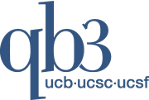RH2.2 IPTG-based rAB Expression
Expression and purification of rAB’s cloned into the RH2.2 expression vector.
1.0 Introduction
This method is for the mid-scale expression and purification of Fabs from the RH2.2 pTAC-based IPTGinducible vector.
2.0 Materials
Glassware/Plasticware
- 250 mL baffled flasks (Fisher Scientific, 10-140-6A)
- 50 mL Conical Tube (Bioexpress, LLC C-3394-4)
- 15 mL Biorad protein purification columns (EconoPac, 732-1010)
- 1.7 mL Eppendorf tubes (Axygen, MCT-150-C)
Reagents
| Name | Company | Catalog Number |
| N-Z Amine | Fluka | C02626-1KG |
| yeast extract | Bioshop | YEX401.1 |
| bio-tryptone | Bioshop | TRP402.1 |
| glucose | Sigma | G8270-1KG |
| carbenicillin | Bioshop | CAR544.10 |
| Tween 20 | Bioshop | TWN510.500 |
| potassium chloride | Bioshop | POC308.1 |
| calcium chloride | Bioshop | CCL302.500 |
| magnesium chloride | Bioshop | MAG510.500 |
| monobasic potassium phosphate | Bioshop | PPM302.1 |
| dibasic sodium phosphate | Anachemia | 84486-440 |
| ammonium chloride | Amresco | 0621-1KG |
| ammonium sulphate | Bioshop | AMP302 |
| sodium sulphate | Bioshop | SOS513.500 |
| magnesium sulphate | BDH | BDH0246-500G |
| sodium chloride | Bioshop | Sod001.10 |
| phosphoric acid | Acros Organics | 201140010 |
| lysozyme | Bioshop | LYS702.25 |
| benzonase | Novagen | 71205 |
| Triton X-100 | Bioshop | TRX506.500 |
| protease inhibitor cocktail tablets | Roche | 11 836 170 001 |
| Protein A sepharose | GE Healthsciences | 17-1279-03 |
| IPTG | Bioshop | IPT001.50 |
| chemically competent T1r BL21 E. coli |
Solutions
1X KCM
- KCl (500 mM)
- CaCL2 (150 mM)
- MgCl2 (250 mM)
2YT media
- 1% yeast extract (10 g)
- 1.6% bio-tryptone (16 g)
- 86 mM NaCl (5 g)
- Make up volume to 1L and adjust pH to 7.0
20X salt stock
- 500 mM Na2HPO4 (70.98 g)
- 500 mM KH2PO4 (68.05 g)
- 1M NH4Cl (53.4 g)
- 100 mM Na2SO4 (14.20 g)
- Mix with heating and sterile filter or autoclave until dissolved and make up to 1L. Store at RT
NZY media
- 1% N-Z-Amine (10g)
- 0.5% yeast extract (5 g)
- Mix in 500 mL and stir until dissolved
- Add 50 mL of 20X salt
- Add 2 mL of 1M MgSO4
- Make up volume to 980 mL and autoclave
Lysis buffer:
- 50mM Tris
- 150mM NaCl
- 1%Triton X-100
- 1mg/ml lysozyme
- 2mM MgCl2
- 10U benzonase
Elution buffer:
- 50mM NaH2PO4
- 140mM NaCl
- 100mM H3PO4
- pH 2.5
3.0 Transformation
- 3.1 Thaw 25 μL of chemically competent BL21-T1r cells on ice
- 3.2 Add 50 ng of sequence-verified pTAC-based RH2.2 expression plasmid to a mixture of 4 μL of 5X KCM in 16 μL of MilliQ H2O on ice
- 3.3 Chill mixture on ice for 10 minutes
- 3.4 Add 20 mL of chemically competent BL21-T1r cells to the mixture of KCM and DNA
- 3.5 Incubate 20 min on ice, transfer to the benchtop, incubate 10 min at RT, return to ice and incubate 2 min on ice
4.0 Expression
- 4.1 Following the last stage of transformation on ice, transfer the entirety of the cell/DNA mixture in to 25 mL of 2YT supplemented with 50 μg/mL carb in a 50 mL Falcon tube, leaving the lid loose but taped secure to allow gas transfer
- 4.2 Inoculate 1/40th volume (2.5 mL) of overnight culture into NZY media + 50 μg/mL carb (100 mL) supplemented with 1/20th volume of 20X salt mixture
- 4.3 Grow 2-3 hr at 37oC, 200rpm until OD 0.8-1.0 achieved
- 4.4 Induce culture with 1/1000th volume of 1M IPTG (i.e. 100 μL in to 100 mL of culture)
- 4.5 Continue growing for 6-8 hrs at 30oC and shaking at 200 rpm
- 4.6 Transfer ½ the volume of culture to a 50 mL Falcon tube and pellet cells at 8000 rpms for 20 min.
- 4.7 Discard supernatant and repeat to obtain a single pellet.
- 4.8 Discard remaining supernatant. At this point the pellet can be frozen for purification at a later date of lysed for purification as per the following step.
5.0 Purification
- 5.1 Lyse pellet by the addition of 10 mL of lysis buffer and nutation for 1.5-4 hrs at 4oC
- 5.2 To ensure complete lysis, mixture can be sonicated for 1 min at 40% intensity using a 1 min program of 5 seconds on and 5 seconds off.
- 5.3 Centrifuge the pellet lysate at 9000rpm for 20min.
- 5.4 Add 250 μl of a protein A sepharose slurry to a 15 ml GF column.
- 5.5 Equilibrate resin with 25 mL of 1X PBS, drain and cap.
- 5.6 Transfer the lysate supernatant to the equilibrated protein A column and allow binding to proceed for 30 min at 4oC with occasional mixing of the resin with the supernatant.
- 5.7 Drain the supernatant from the column retaining the flow-through and wash the resin bed with 40 ml of 1X PBS.
- 5.8 Add 60 μl of 1M Tris pH 8 added to Eppendorf collection tubes to neutralize the elution buffer.
- 5.9 Add 300 μl Fab elution buffer (above) to each capped column and incubate 5 min before draining in to an Eppendorf containing neutralization buffer.
- 5.10 Elution step can be repeated for a total elution volume of 600 μl neutralized with 1200 μl Tris.
- 5.11 Additional polishing steps can be carried out as necessary.
- 5.12 Columns can be regenerated with 10mL of 100mM H3PO4, washed with 20ml TBS, stored in 2ml 20% EtOH at 4oC.
Please send corrections, modifications and suggestions to smiersch@recombinant-antibodies.org



